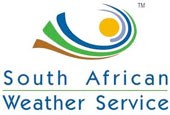More than 260 people are killed by lightning in South Africa each year, the SA Weather Service said on Wednesday (13 February).
Forecaster Puseletso Mofokeng said these figures were annual averages based on Statistics SA data between 1999 and 2007, when 2,375 lightning related deaths were reported.
He was speaking after two groups of Johannesburg school pupils were struck by lighting this week. Four 16-year-old Protea Glen Secondary school girls were struck while on their way home from school on Monday (11 February). One was critically injured.
Nine boys from King Edward VII School, aged between 16 and 18, were pulling the covers over a cricket pitch when a bolt of lightning struck the field on Tuesday (12 February) afternoon. Two were critically injured.
Mofokeng said it was likely that some deaths went unreported.
"The year with the lowest recorded death rate was 2,000, when only 205 [deaths] were reported," he said.
Most of the lightning fatalities happened in the Eastern Cape, closely followed by KwaZulu-Natal. Provinces with the second-highest risk were the Free State, Gauteng, and North West. Mpumalanga and Limpopo had marginally lower lightning risks, while the Northern and Western Cape had low incidences of lightning.
Mofokeng said: "Lightning itself is very dangerous, all the time. There doesn't have to be a severe storm."
If thunder could be heard, even in the distance, it was wise to take precautions, because lightning could strike from a distance. Mofokeng said there was a common misconception that lightning mainly struck during heavy rain.
"There doesn't have to be rainfall for lightning to strike, and when a storm is past it can still be dangerous."
CBI-electric Professor of Lightning Ian Jandrell, of the Wits High Voltage Laboratory, agreed: "Lightning generally precedes rainfall or comes after the rain."
He said it was "good advice" not to take a bath or shower during storms but this depended on how well the home was earthed.
Jandrell said he had not visited the areas where the lightning strikes occurred, but was speaking from insights based on the understanding of how lightning works.
He said more than 90% of lightning was the negative downward type, which would strike the highest object, but not necessarily at the top.
Less than five percent was positive downward lightning, which could travel down past a skyscraper building to strike the street below.
It was also very unlikely that one would be hit by a direct lightning strike.
"For example, if lightning strikes a tree in a parking area, [someone standing nearby] could be harmed," Jandrell said.
He added that there were many common myths about lightning in South Africa and the rest of the world. For example, covering mirrors during storms to reduce the likelihood of a strikes had no scientific basis. Similarly, placing car tyres on the roof of one's home would not repel lightning.
At least seven people have been killed by lightning since the beginning of the year.
Source: Sapa via I-Net Bridge



























